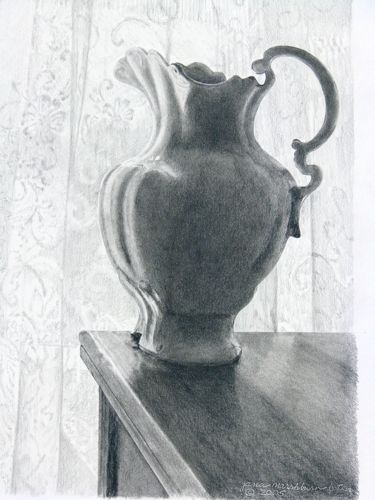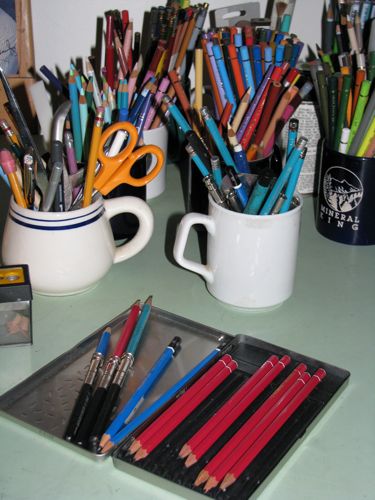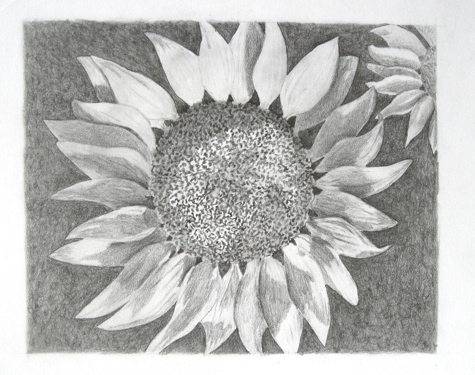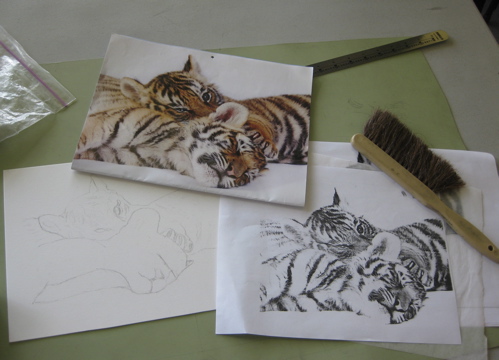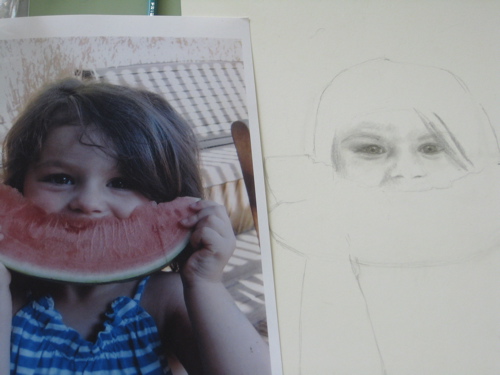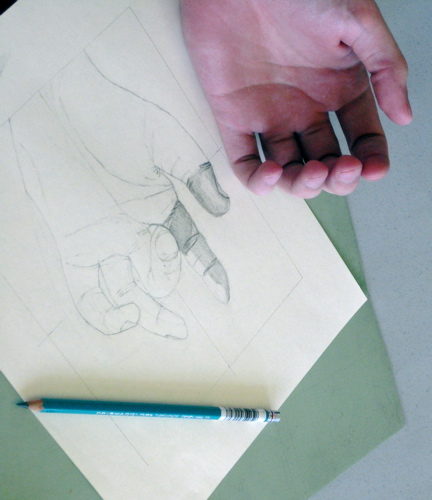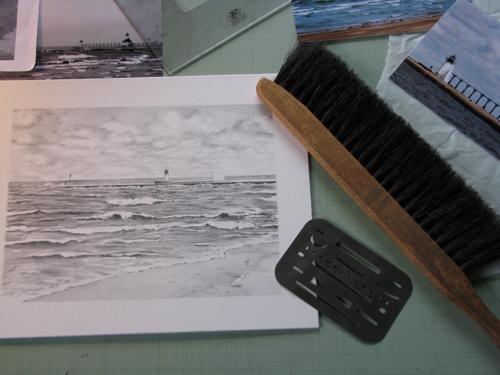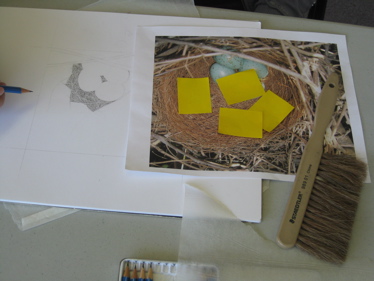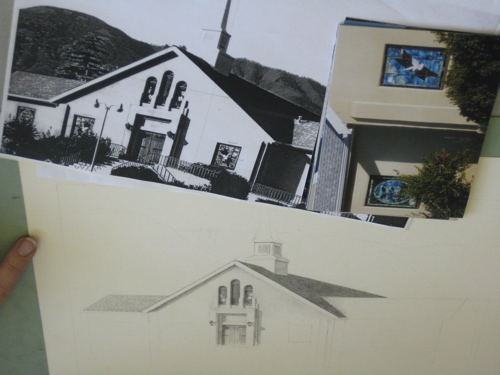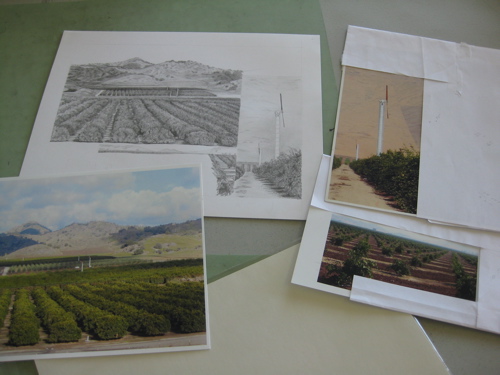Sixth in the series “Thoughtful Thursdays”
When teaching people how to draw, sometimes it is difficult to articulate my thoughts. A picture is worth a thousand words, and sometimes a thousand words still can’t explain the picture. Often, I can’t find the right word, so I will make one up. The funny part is that my students understand the meaning!
A woman was working on some boulders but something wasn’t looking believable. The problem was that she had inadvertently drawn potatoes and an oversized pinto bean! We figured out how to turn them in to rocks, and then she asked how to draw some grass behind the boulders. I was trying to keep her from making a lot of little lines all in a perfect row. Remember the bird “Woodstock” in the comic strip Snoopy? His word bubble had a lot of little vertical lines. To help her not make Woodstock word marks, the instructions came out, “You need to sort of bounce your clumpage along – that’s it, just horizontalize it a bit more”. She got it.
Some folks have taken lessons so long that I have become a habit to them. I tell them they don’t need lessons because they know how to draw. They tell me that unless they pay their monthly fee, they will not carve out time in their lives to draw. While they draw, we talk about art, drawing and life.
Truthfully, I love my students – we become friends, comrades, buddies in the artworld. I show them my art and give them the freedom to tell me anything they think about it, good or bad. We speak truth to one another and try to use known English words. It is helpful and refreshing and sometimes, it can be hilarious!
Swirls – 11×14″ – pencil
